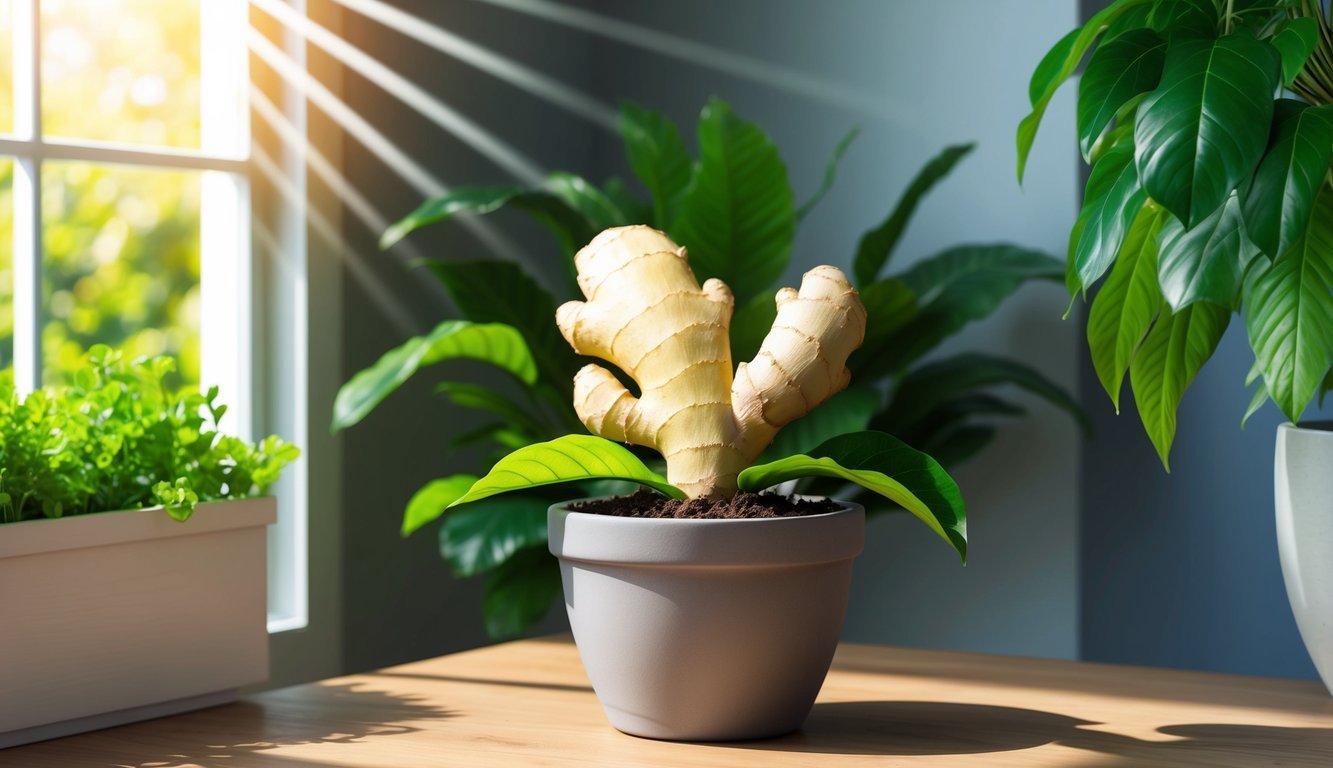
You don’t need an outdoor garden to enjoy fresh ginger at home.
Ginger (Zingiber officinale), a delightful plant known for its versatility and flavor, can easily be grown indoors.
With its lush, bamboo-like foliage, ginger not only adds a burst of flavor to your meals but also serves as an attractive addition to your interior space.
When to Plant Your Ginger
Ginger thrives in longer days, making spring the ideal time to start planting.
According to Ian Jerolmack, owner of Stonecipher Farm, February and March are perfect months for initiating growth.
However, you aren’t limited to these months; you can plant ginger any time that works for you!
How to Plant Ginger Indoors
Starting your ginger from a dormant rhizome is a breeze.
Much like potatoes, these rhizomes will sprout when kept in warm surroundings.
Follow these steps for a successful indoor ginger garden:
- Choose the Right Rhizome: Look for organic ginger in health food stores.
Avoid non-organic options, as they may be treated with growth inhibitors that prevent sprouting.
A piece weighing around half a pound is ideal for robust growth.
- Optional Soaking: You can soak the rhizome in water for a day before planting if you’d like to speed up the sprouting process, though this isn’t strictly necessary.
- Plant It Right: Take a pot or tray and fill it with your choice of soil—potting mix, peat, or compost will do just fine.
Bury the ginger rhizome about two inches deep in the soil.
- Warm Your Plant: Place the container in a cozy location, such as on top of the refrigerator or near a heater, ensuring the temperature stays between 70°F and 90°F for optimal growth.
- Water Wisely: Keep the soil lightly moist, ensuring it doesn’t become waterlogged.
A gentle watering once a week is usually enough to keep your ginger happy.
- Transplant: After about six to eight weeks, when your ginger has begun to sprout, it’s time to move it to a larger pot (at least 4 gallons) to give it space to thrive.
Caring for Your Indoor Ginger Plant
To keep your ginger healthy and thriving, focus on providing the right light, water, soil, and nutrients:
- Light Needs: Ginger loves bright light, so find a sunny spot where it can bask in sunlight throughout the day.
If you decide to move it outdoors in warmer months, a little shade will be beneficial.
- Consistent Watering: Once your ginger develops leaves, ensure it gets regular water while allowing for good drainage.
- Soil Preferences: Ginger grows best in well-draining, slightly acidic soil, ideally with a pH between 6.0 and 6.5.
- Fertilization: As a heavy feeder, ginger benefits from a monthly boost of nutrients, so consider using fish emulsion or kelp extract.
When fall arrives and your plant starts to go dormant, you can gently dig into the soil to harvest the ginger you need.
Alternatively, you may choose to replant part of the rhizome along with a few stems to continue the cycle.
With this guide, you’re all set to embark on your indoor ginger-growing journey.
Enjoy the process, and soon you’ll have the satisfaction of harvesting your own fresh ginger!
Source: Marthastewart

